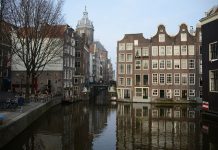Abu Dhabi is the largest of the seven Emirates and the Federal capital of the UAE. It occupies an area of 26,000 square miles. Its long coastline – the shallow waters of the Southern Persian Gulf, extending from the base of the Qatar Peninsula in the west to the border of the emirate of Dubai on the north east, was once the world’s best waters for pearling.
When the pearling industry declined, oil discovery in the offshore oilfields of the Southern Persian Gulf revived the economy of Abu Dhabi. Abu Dhabi was also the first emirate to export oil from the Umm Shaif offshore field in 1962. On the land, it stretches south to the oases of Liwa where some of the world’s largest sand dunes can be found , and east to the ancient oasis of Al Ain. This makes Abu Dhabi the largest as well as the most populated of all the emirates.
The rise of British naval power in the Persian Gulf in the mid-18th century coincided with the rise of two important tribal confederations along the coast of the lower Gulf. These were the Qawasim, whose descendants now rule Sharjah and Ras al-Khaimah, and the Bani Yas, whose descendants are now the ruling families of modern Abu Dhabi and Dubai.
The Bani Yas were originally based in Liwa, an oasis on the edge of the Empty Quarter desert, but moved to Abu Dhabi in 1793. They engaged in the traditional Bedouin activities of camel herding, small-scale agriculture, tribal raiding and extracting protection money from caravans passing through their territory. The Bani Yas divided into two main branches in the early 19th century when Dubai split from Abu Dhabi.
After the collapse of the world pearl market in the early 20th century, the entire coast was plunged into abject poverty. In 1939, Sheikh Shakhbut, the ruler of Abu Dhabi, granted the first of several oil concessions on his territory. It was not until 1958, however, that oil was found in the emirate. With a population at the time of only 15,000, Abu Dhabi was on its way to becoming very rich.
Britain’s 1968 announcement that it would leave the Persian Gulf in 1971 came as a shock to most of the ruling sheikhs. Negotiations eventually resulted in independence for Bahrain and Qatar and the creation of a new federal nation: the United Arab Emirates. The UAE, with Abu Dhabi as its capital, came into existence on 2 December 1971. When oil revenue started pouring in, the reed and mud-brick huts were rapidly replaced by banks and boutiques.
In recent years, the settlement has spread to occupy virtually all of Abu Dhabi island. It’s been remodelled in less than 40 years to become the>




























